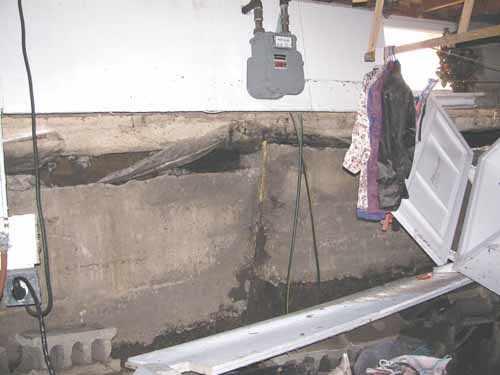Yorkton's Building Services Division is warning homeowners to keep an eye on their basements as a wave of foundational problems spreads through the city.
The issue primarily affects concrete block foundations, particularly those without reinforcement, say officials. Exceptionally high water levels in the soil over the past two years have been pushing foundation walls inward through hydrostatic pressure. Some foundations will develop cracks, and, left unchecked, will eventually collapse.
"We're not looking at a situation in town where we're going to see homes disappear into the earth," says Brant Hryhorczuk, the city's manager of building services. "It's more subtle than that. It's a situation where the foundation is gradually going away."
In many cases, the damage is not new. During the state of emergency that followed last summer's flood, building inspectors examined hundreds of the city's homes, many of them with finishing materials stripped off and the bare foundations exposed for the first time. Structural problems that had been developing for decades were now visible.
"The life expectancy of a block basement was 25 to 30 years-these were built in the 60s. So basically, the life expectancy has come to an end," says building official Jeff Fawcett.
Hryhorczuk's department has identified about 25 homes in the city now in the process of repairing their block foundations.
"And we know that there are quite a few more out there," says Fawcett.
Two of these foundations have collapsed, although Fawcett notes that the occupants were removed beforehand and the structures were both saved.
The first step for anyone concerned about the condition of their foundation is to call the Building Services Division, urges Hryhorczuk.
"If there's one message we want to put out there, it's that our doors are wide open for anybody who wants to come and look at their options."
There is typically no charge to have a building official come out to evaluate a concern, notes the building services manager.
The damage may be difficult for the untrained eye to spot.
"There are certain things that we look for-for example, we can see light coming through the block, which means that it's separated," Hryhorczuk says.
Cracks in the inside or outside of the foundation wall are a telltale sign. Property owners can also watch for a deflection, or bowing, of the wall when looking at it lengthwise. Observing a
difference in the angle of windows compared to the wall is another way a deflection can be spotted.
But homeowners shouldn't second-guess themselves, says Fawcett.
"If you don't know and something doesn't look right, call us."
Repairing a foundation can be expensive, but the cost increases the longer it is neglected. In cases caught early, cracks may be repaired or foundations may be shored up as a semi-temporary solution. Basements that have severely deteriorated will need to be replaced.
When conducting basement repairs, Hryhorczuk reminds property owners that it is their responsibility to ensure the contractor obtains a building permit. Having the project inspected and maintaining a paper trail gives protection down the road, he adds.
"[A permit] is really very cheap for the services you get."



